
Plans are for a single lounger, but can be easily modified, as one of our readers did, to a double. Featuring no special hardware, slatted wood design, adjustable back angles, and optional wheels.
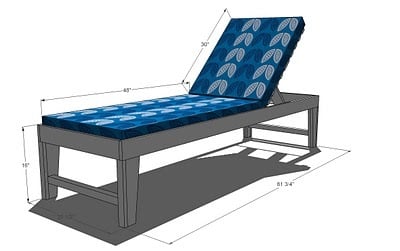
Preparation
Shopping List
1 – 2×2 8′ Long
10 – 1×2 8′ Long
5 – 1×4, 8′ Long
2″ Screws
1 1/4″ Screws
5 Hinges
1 – 24″ 3/4″ Dowel
4 – 3/4″ Pipe Straps
Wood Glue
Wood Filler
Finishing Supplies
24″ Wide Foam, 48″ and 30″ long for Cushions
Fabric for Cushions, 2 1/2″ yards (approximately)
2 – 1×2 @ 73 1/4″ (Side Stringers)
1 – 2×2 @ 22 1/2″ (Base Support)
2 – 1×4 @ 81 3/4″ (Sides)
4 – 1×4 @ 14″ (Inside Leg Piece)
2 – 1×4 @ 24″ (Front and Back)
2 – 2×2 @ 22 1/2″ (Stretchers)
4 – 1×4 @ 12 1/2″ (Outer Leg)
4 – 1×2 @ 12 1/2″ (Fronts and Backs of Legs)
24 – 1×2 @ 24″ (Main Slats)
2 – 1×4 @ 24″ (Support Slats)
3 – 1×2 @ 30 1/2″ (Back Stringers)
2 – 1×4 @ 16 1/2″ (Back Incline Support)
1 – 3/4″ Hardwood Dowel or Pipe @ 24″ (Back Incline Catch)
This is an advanced project, make sure you fully understand how this lounger works before beginning. Work on a clean level surface. Check for square after each step. Predrill and countersink your screws. Use necessary safety precautions and equipment.
Instructions
Step 1
Step 3
Step 4
Step 7
Step 8
Step 9
Step 10
Attaching the Back. Lay the back in the lounger, and attach the last slat of the back to the last slat on the lounger. Simply lay the hinges flat on top of the slats and screw in place. Position the hinges so that the pin rests in a gap between the back slat and the seat slat. Use three hinges, all positioned over the back stringers.










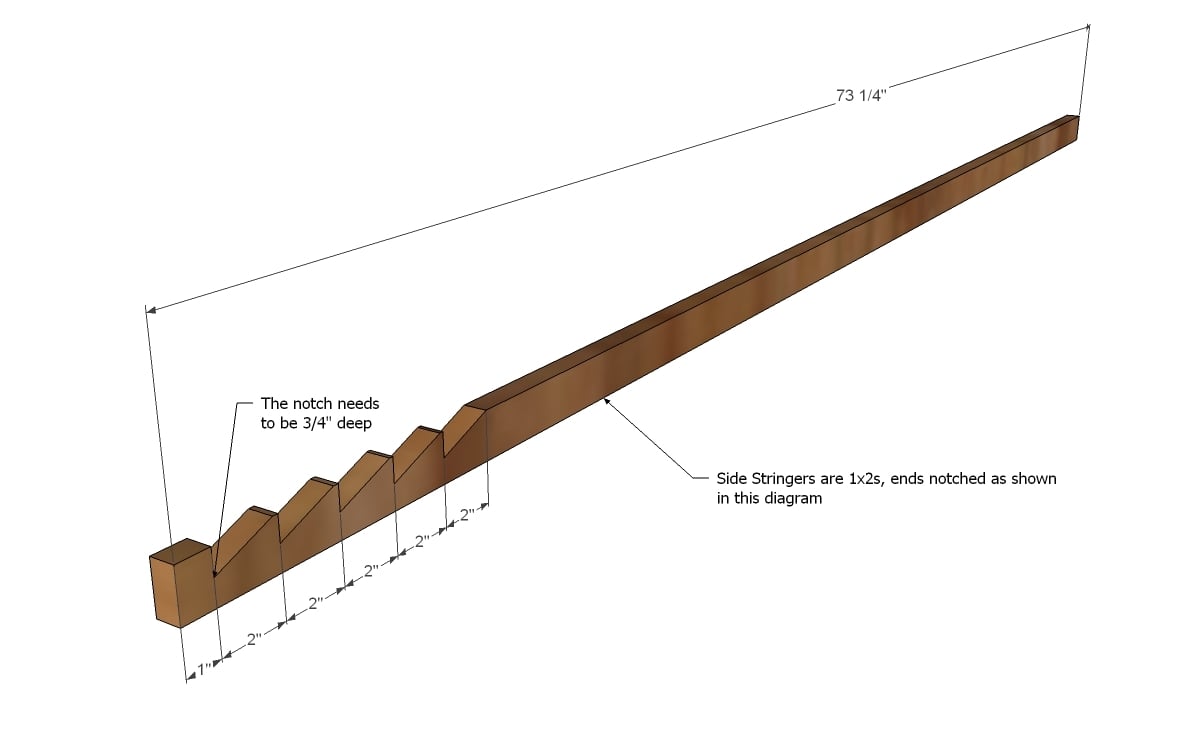
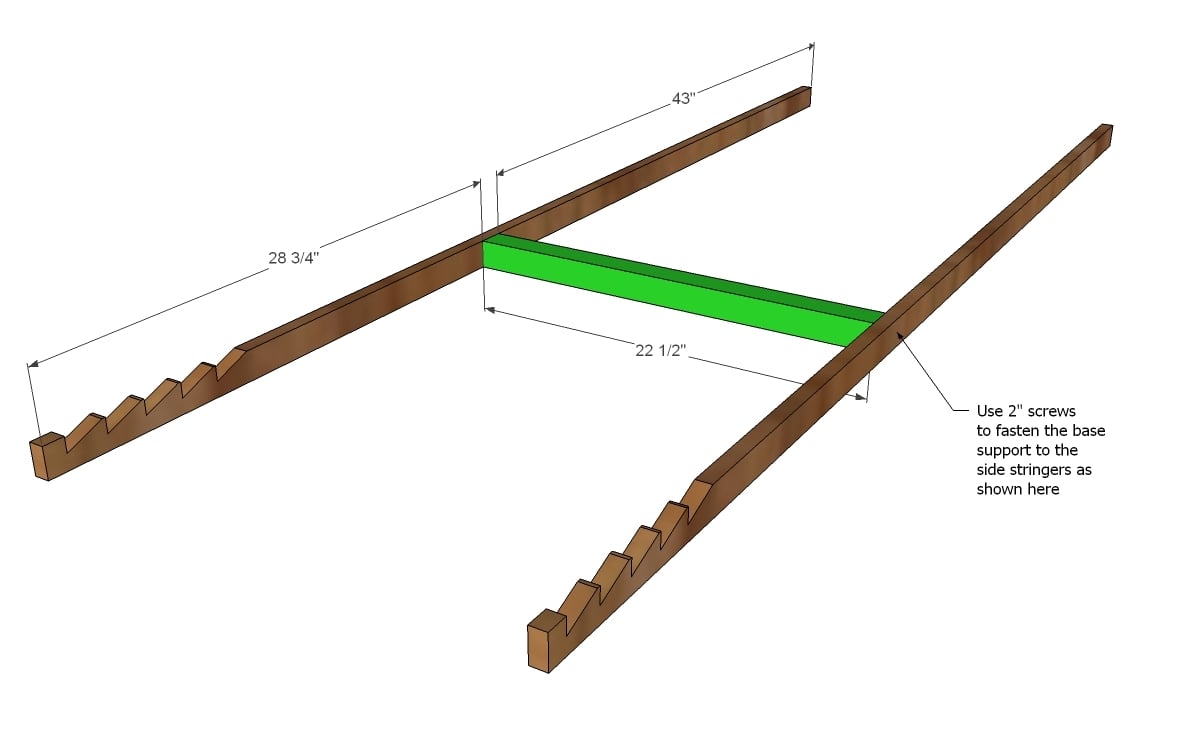


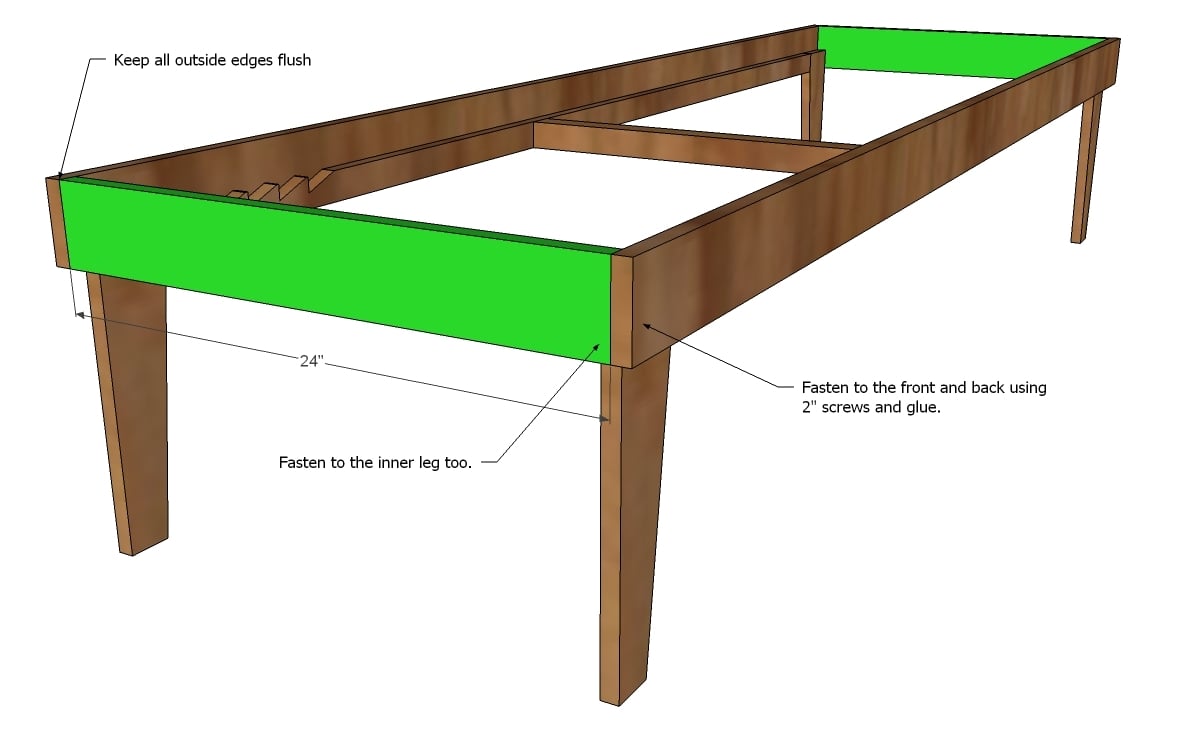
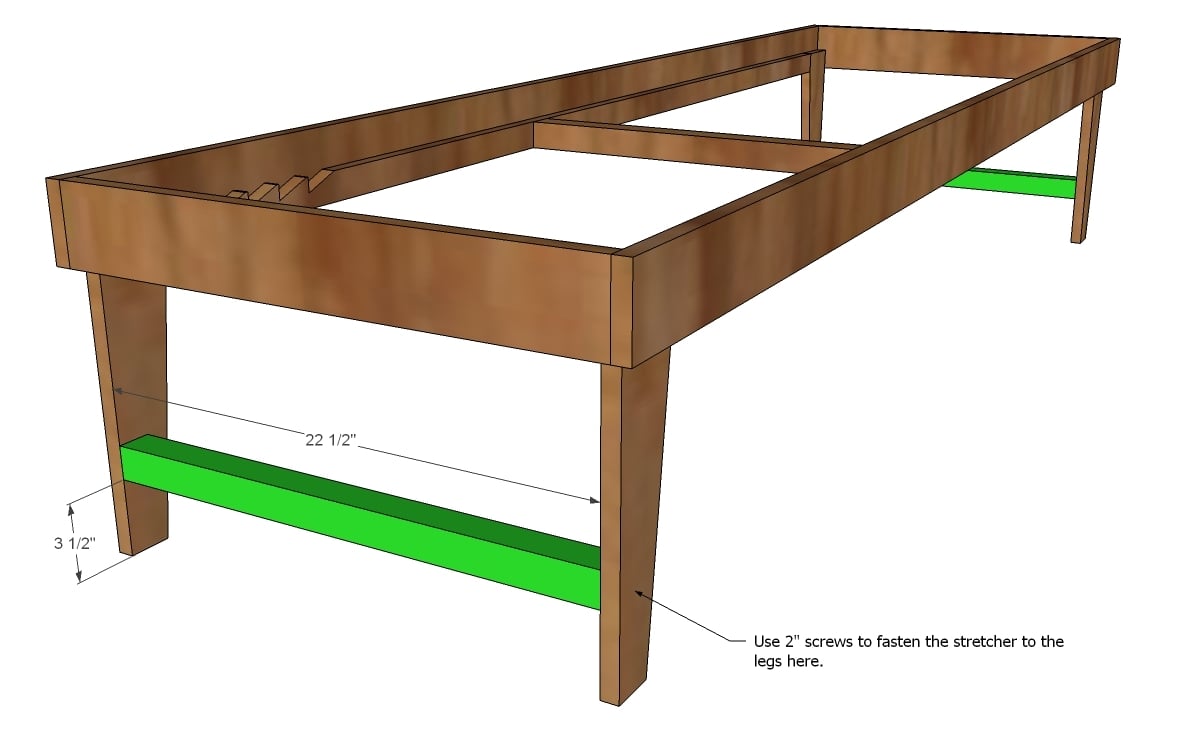







Comments
nancy mcnally (not verified)
Wed, 03/14/2012 - 19:22
Double chaise plans
Ana- You are awesome. I have been on your site every night for weeks dreaming. Does anyone have the plans written down to covert this chaise to double. I am new to wood working and require step by step. Thanks.
kathrynmarra
Tue, 05/26/2015 - 12:15
double lounge
did you ever get the double chaise lounge plans?
Guest (not verified)
Mon, 03/26/2012 - 06:59
longer legs?
I have bad knees and would like a taller chaise lounger. How much longer can I make the legs without sacrificing stability?
Denise Talley (not verified)
Wed, 07/18/2012 - 16:27
chaise lounge cushion
Love your work! DId you sew the cusion as well? Would love to see your plans for that?
Mattr777
Wed, 07/17/2013 - 10:11
Wheels
Has anyone attached wheels to the chaise yet? If so I was wondering were you purchased them and how did you mount them. Metal rod with holes drilled or single wheels attached to each leg?
Going Like Sixty
Sun, 01/19/2014 - 08:52
Popular in Costa Rica
At least four of these chaise loungers have been made in Atenas, Costa Rica within the past month. Probably more to come based on the Facebook comments we are all getting! Thanks for clear and concise plans with good illustrations.
kathrynmarra
Tue, 05/26/2015 - 12:14
double lounge
Are there plans on here for making this lounger into a double?
Ana White Admin
Tue, 05/26/2015 - 18:03
Double
Take a look here http://ana-white.com/2010/05/simple-modern-outdoor-double-lounger